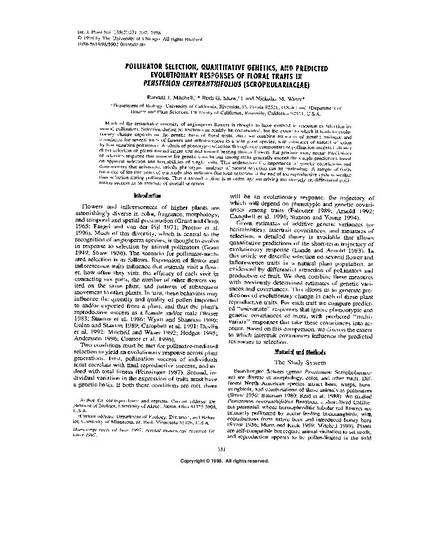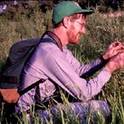
Much of the remarkable diversity of angiosperm flowers is thought to have evolved in response to selection by animal pollinators. Selection during pollination can readily be documented, but the extent to which it leads to evolutionary change depends on the genetic basis of floral traits. Here we combine estimates of genetic variance and covariance for several traits of flowers and inflorescences in a wild plant species, with estimates of natural selection by hummingbird pollinators. Analysis of phenotypic selection through two components of pollination success indicates direct selection of plants toward larger size and toward bearing shorter flowers that produce more nectar. Predictions of selection response that account for genetic correlations among traits generally exceed the simple predictions based on apparent selection and heritabilities of single traits. This underscores the importance of genetic correlations and demonstrates that univariate, strictly phenotypic, analyses of natural selection can be misleading. A sample of fruits from one of the two years of our study also indicates that total selection at the end of the reproductive cycle is weaker than selection during pollination. Thus a second caution is in order, against relying too strongly on differential pollination success as an estimate of overall selection.
Available at: http://works.bepress.com/randall_mitchell/1/
